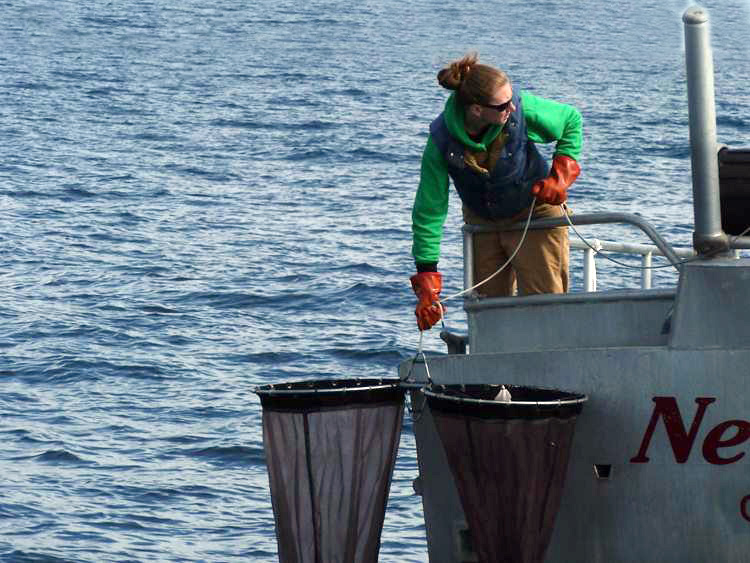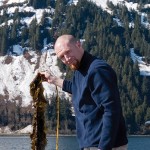Why are we sampling?
Marine ecosystems are not static over time; they may change gradually from year to year or shift abruptly. Changes are in part driven by factors that operate from the “bottom up,” such as environmental changes (e.g., changes in temperature, salinity, or turbidity) and biogeochemical dynamics that affect the availability and recycling of nutrients. Long term monitoring of the area affected by the Exxon Valdez oil spill is important, not only to assess the recovery of resources, but also to understand how the ecosystem is changing over time. This project provides physical and biological measurements that can be used to assess environmental conditions that have bottom-up influences on the marine ecosystems of Prince William Sound.
Where are we sampling?
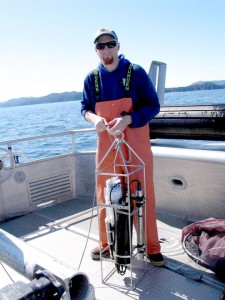
Gulf Watch scientist Rob Campbell prepares a CTD instrument for oceanographic sampling in Prince William Sound.
We deploy an autonomous moored profiler (AMP) in central Prince William Sound and conduct several regular vessel surveys within Prince William Sound (PWS). Vessel surveys visit the mooring site, four historically sampled bays, and the major entrances (Hinchinbrook Entrance and Montague Strait) of PWS. See map at right.
How are we sampling?
The AMP (see the diagram below) measures temperature, salinity, oxygen concentration, chlorophyll-a concentration, turbidity, and nitrate concentration as it ascends from 60 m to the surface each day. In 2016 we added a plankton camera which is an “underwater microscope” that takes pictures of individual plankton as the profiler moves up in the water.
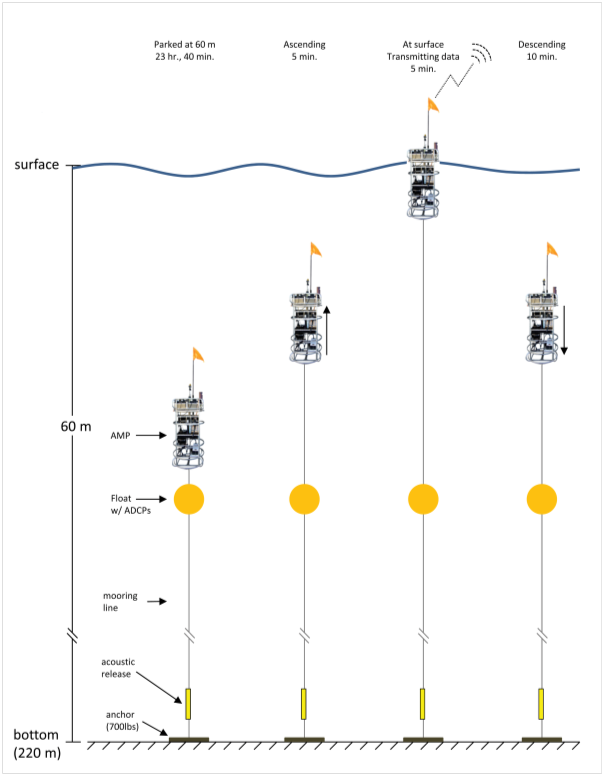
A TYPICAL PROFILE CYCLE DONE BY THE AMP PROFILER. THE PROFILER SPENDS MOST OF ITS TIME AT A SPECIFIED PARK DEPTH (50-60 M), WHICH KEEPS IT AWAY FROM SURFACE TRAFFIC AND WAVES AND MINIMIZES BIOFOULING. AT SPECIFIED INTERVALS (USUALLY DAILY), THE PROFILER CONTROLLER WAKES FROM ITS LOW POWER SLEEP STATE, POWERS UP THE INSTRUMENTS, AND ASCENDS TO THE SURFACE AT 25-30 CM PER SECOND. AT THE SURFACE, THE CONTROLLER CONNECTS INTO A SERVER VIA A CELLULAR MODEM TO SEND OUT DECIMATED DATA AND RECEIVE NEW PROFILING INSTRUCTIONS. AFTER A SHORT TIME AT THE SURFACE, THE PROFILER WINCHES ITSELF BACK TO THE PARK DEPTH.
In addition, we conduct vessel surveys six times per year at selected stations throughout Prince William Sound. At each sampling station, we collect water for nutrient and chlorophyll-a analysis, collect plankton, and complete a conductivity-temperature-depth (CTD) cast to collect the same type of data with the same instrumentation as that collected by the instrument on the AMP.
What are we finding?
Analysis of the temperature anomalies (deviations from expected) in PWS shows a warming trend over the last 40 years at most depths. Temperatures in central PWS have been above average since late 2013, as has been observed elsewhere in the Gulf of Alaska. PWS exhibited the same warm anomaly seen throughout the Gulf with approximately the same timing, although PWS remained slightly above average into 2017, while parts of the Gulf of Alaska appeared to be returning to an average or perhaps cooler than average state as a result of the 2017-18 La Niña. Following a downward trend into early 2018 and a brief period of negative anomalies, anomalies have again trended warmer than average, which corresponds to basin-wide increases in sea surface temperature observed in late 2018 and 2019 (e.g., see: https://www.ospo.noaa.gov/Products/ocean/sst/anomaly/). Temperature anomalies in 2019 were even warmer than those seen during the 2013-2016 marine heatwave. In 2021, weakly negative anomalies were observed, and near-surface temperature anomalies were once again high in early 2022.
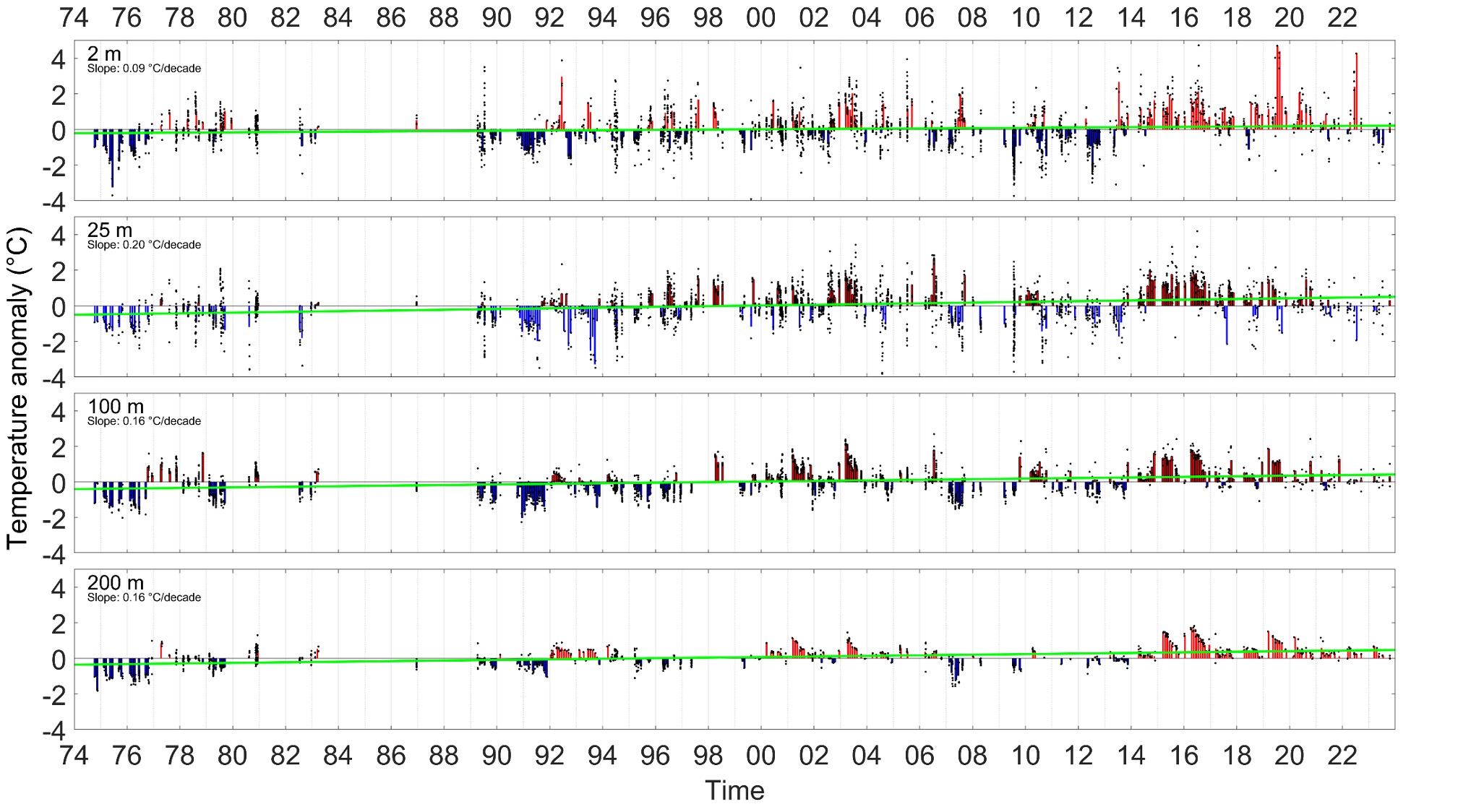
TEMPERATURE ANOMALIES FROM 1975 THROUGH 2022 FOR CENTRAL PRINCE WILLIAM SOUND SHOW INCREASING TEMPERATURES AT ALL DEPTHS. TEMPERATURES IN 2014 AND 2015 WERE MORE THAN 4 °C ABOVE AVERAGE IN SOME LOCATIONS. VERTICAL BARS INDICATE MONTHLY AVERAGE ANOMALIES (DEVIATIONS FROM EXPECTED), BLACK DOTS REPRESENT INDIVIDUAL OBSERVATIONS, AND THE GREEN LINE INDICATES THE LINEAR TREND.
A time series of surface chlorophyll concentrations in central PWS was assembled from sea-viewing wide field-of-view sensor (seaWIFS) and moderate resolution imaging spectroradiometer (MODIS) satellite chlorophyll products (downloaded from the National Oceanic and Atmospheric Administration (NOAA) CoastWatch Program and the National Aeronautics and Space Administration’s (NASA’s) Goddard Space Flight Center OceanColor Web). Examination of the satellite chlorophyll records from central PWS shows that the spring phytoplankton bloom in 2014 was much earlier and stronger than average, but the spring bloom since then has been more modest. In general, the magnitude of the spring bloom has been declining over the last two decades, but there is not any indication that the timing of the bloom has changed.
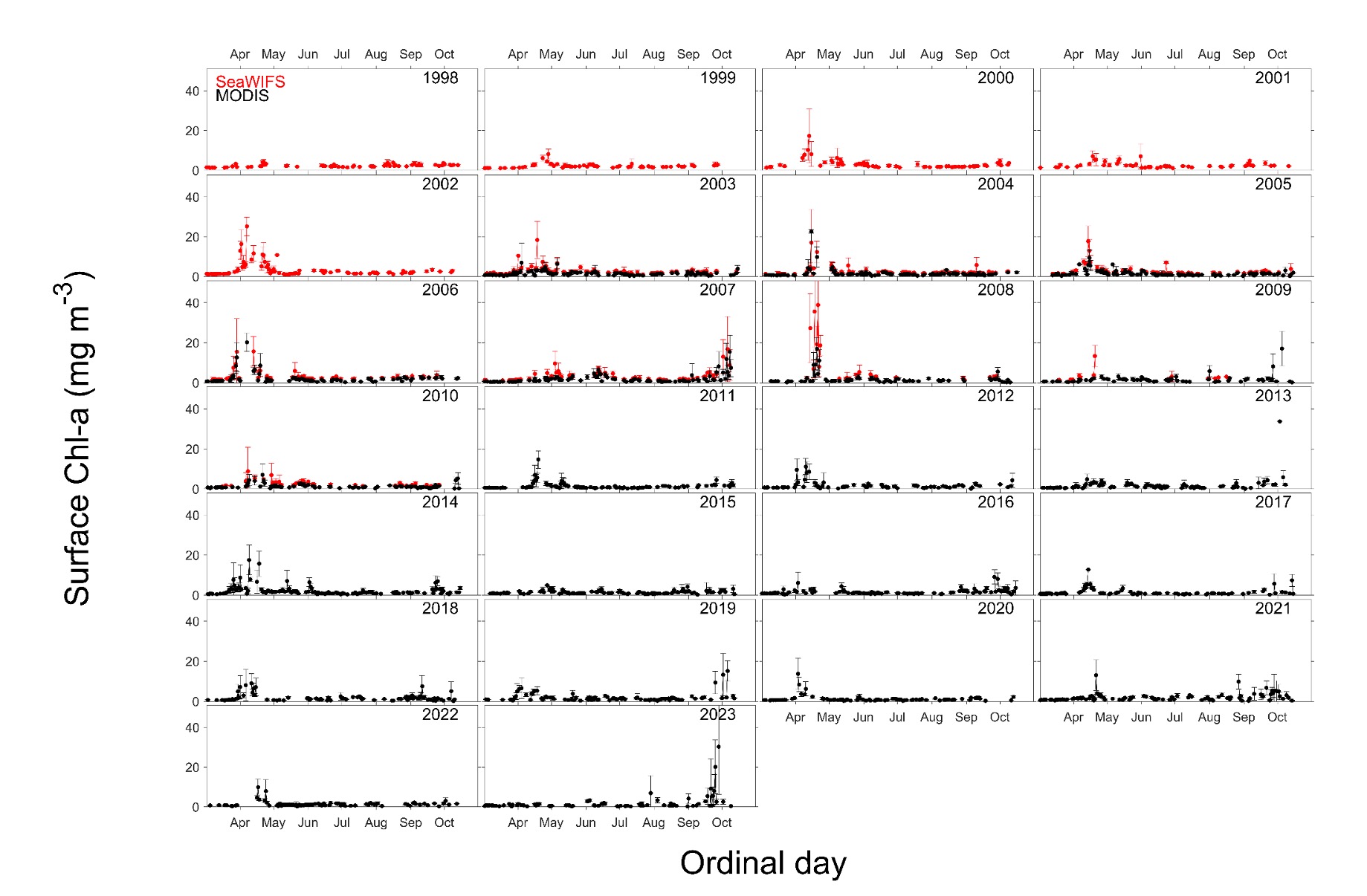
SURFACE CHLOROPHYLL-A TIME SERIES IN CENTRAL PRINCE WILLIAM SOUND. DATA ARE DAILY MEAN AND STANDARD DEVIATION WITHIN NON-CLOUD-MASKED PIXELS. THE SEAWIFS AND MODIS DATA WERE EXAMINED FOR AN OFFSET BETWEEN THE TWO DURING YEARS WHEN THE TWO TIME SERIES OVERLAPPED (2003-2010). SEAWIFS CHLOROPHYLL ESTIMATES TENDED TO BE SLIGHTLY LOWER THAN MODIS ESTIMATES AND WERE ADJUSTED TO MAKE THE ESTIMATES COMPARABLE. DATA WERE DOWNLOADED FROM THE NOAA COASTWATCH PROGRAM/NASA’S GODDARD SPACE FLIGHT CENTER OCEANCOLOR WEB (HTTPS://COASTWATCH.PFEG.NOAA.GOV/ERDDAP/GRIDDAP/INDEX.HTML; DATA PRODUCTS ERDMBCHLA1DAY AND ERDSW2018CHLA1DAY).
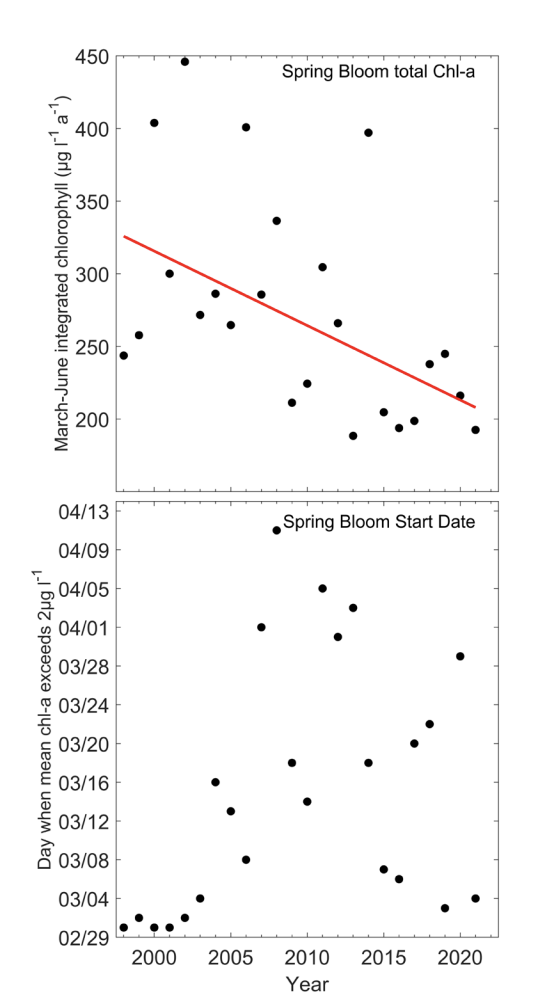
ESTIMATES OF THE MAGNITUDE (TOP PANEL) AND ONSET (BOTTOM PANEL) OF THE SPRING BLOOM IN CENTRAL PRINCE WILLIAM SOUND (SAME DATA AS FIGURE ABOVE). THE MAGNITUDE OF THE BLOOM WAS ESTIMATED BY NUMERICALLY INTEGRATING CHLOROPHYLL CONCENTRATION FROM MARCH 1 TO AUGUST 15 IN EACH YEAR USING THE TRAPEZOID RULE. THE ONSET OF THE BLOOM WAS ESTIMATED AS THE DAY OF THE YEAR WHEN SURFACE CHLOROPHYLL CONCENTRATIONS FIRST EXCEEDED 2 ΜG L-1. ON DATES WHEN THERE WAS AN ESTIMATE FROM BOTH THE SEAWIFS (ADJUSTED FOR OFFSETS) AND THE MODIS TIME SERIES AVAILABLE, THE MIDPOINT WAS USED.
